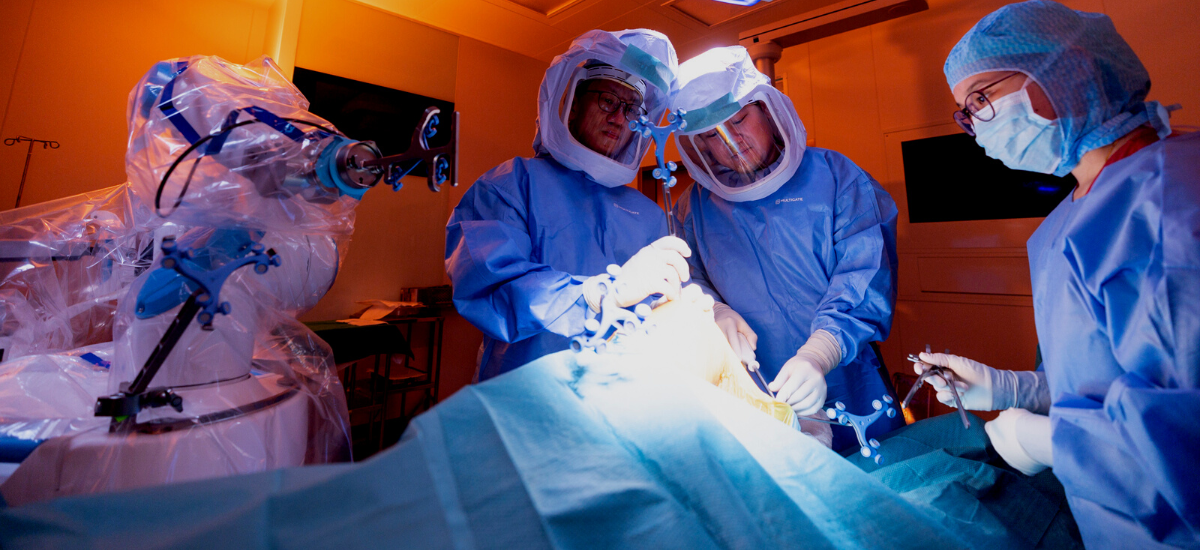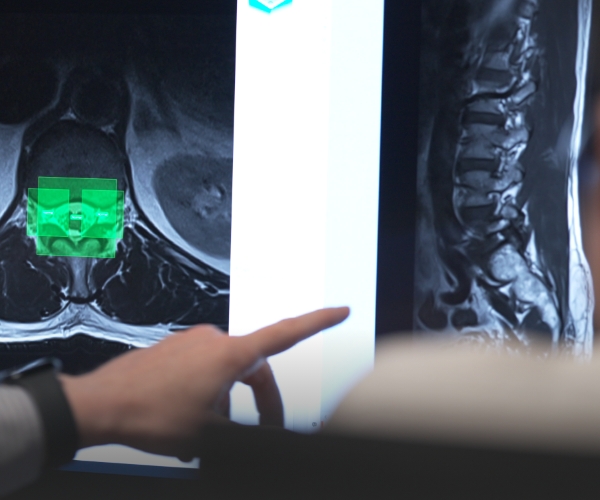Published on 12 September 2022
You might not be familiar with robots in the operating room during a knee replacement surgery, but here’s why you should get acquainted.
Enter the future of medicine. While it may have only been the stuff of movies in the past, robots have since found their place amidst us in many facets of life – such as within the operating theatre.
Combined with the prowess of medical professionals, the use of robots offers a multitude of potential benefits. In Singapore, there’s one particular area in which robots have become an increasing presence: knee replacement surgeries.
Here’s a guide to understanding robot-assisted knee replacement surgeries, what it entails, and how it compares to the traditional method.
Robots: An extra hand in the operating room

Contrary to popular belief, robot-assisted knee replacement surgeries are not performed by robots in entirety. Rather, the robots are integrated into knee replacement surgeries to assist orthopaedic surgeons.
The main function of these devices: ensuring greater precision. While orthopaedic surgeons are backed by years of experience, robotic accuracy still precedes the capabilities of mere mortals.
“Robotic surgery promises to be more accurate, consistent, and individualised. In terms of accuracy, we are aiming for a sub-millimetre per degree accuracy in bone cuts and the overall knee alignment with the use of technology,” said Adj Asst Prof Wang Lushun, Consultant, Division of Hip and Knee Surgery, Department of Orthopaedic Surgery, Ng Teng Fong General Hospital (NTFGH).
For many years, a mechanically-aligned straight knee has been the gold standard for knee replacement surgeries. Now, with the robot’s precision and real-time computing ability, surgeons can get much closer to this goal, with much more consistency.
“When we do a knee replacement, there are a lot of parameters that can confuse the human mind,” he explained. “[But] with robotic technology, surgeons can individualise a patient’s knee alignment based on his or her own unique knee anatomy with a high degree of confidence.”
This, when applied alongside enhanced recovery protocols and minimally invasive techniques, could also “lead to faster recovery for our patients”, added Asst Prof Wang.
Reducing risks and redos
Beyond being an extra hand during the surgery itself, the technology also aids in pre-surgical planning.
With this, surgeons can map out the patient’s knee in 3D prior to the surgery and discern the best surgical route, depending on the complexity of each case. This preparedness before going into the surgery further paves the way for the best outcomes and a reduced risk of complications, the team explained.
“Robotic knee replacement gives you a theoretically more precise outcome,” said Dr Ng Yau Hong, Consultant, Division of Adult Reconstruction and Joint Replacement Surgery, Department of Orthopaedic Surgery, National University Hospital (NUH). “This reduces the number of outlier cases as compared to total knee replacements done in the traditional manner.”
With fewer outliers and more individualised surgeries, robot-assisted total knee replacement surgeries might also mean longer-lasting implants, potentially reducing the need for redo surgeries later on in life.
“The benefits could translate to improved clinical results, more patient satisfaction, and greater implant longevity,” summarised Asst Prof Wang.
More long-term data still needed

While empirical data may suggest that robot-assisted knee-replacement surgeries lead to better patient outcomes, both clinicians stressed that there is still a need for more research to be done.
“More long-term data is required to evaluate whether the added precision translates to better patient outcomes,” shared Dr Ng.
Asst Prof Wang agreed, stressing the need for “more long-term, well-designed studies” to confirm the beneficial effects of incorporating robotics into knee replacement surgery.
The lack of long-term data largely owes to the fact that the introduction of robots in knee replacement surgeries is a fairly new breakthrough. But with more time, research, and data, clinicians will eventually gain a better understanding of these devices, and how they can be used to achieve the best results for patients.
In consultation with Adj Asst Prof Wang Lushun, Consultant, Division of Hip and Knee Surgery, Department of Orthopaedic Surgery, NTFGH and Dr Ng Yau Hong, Consultant, Division of Adult Reconstruction and Joint Replacement Surgery, Department of Orthopaedic Surgery, NUH.



